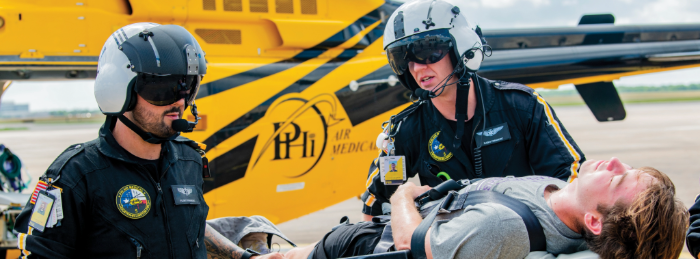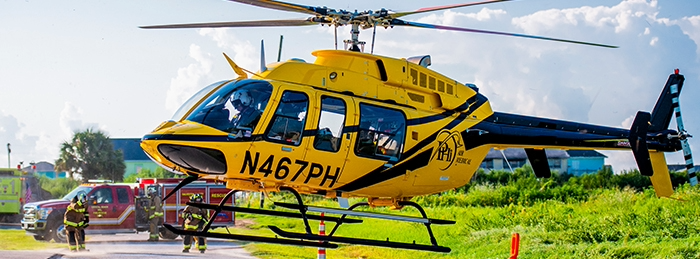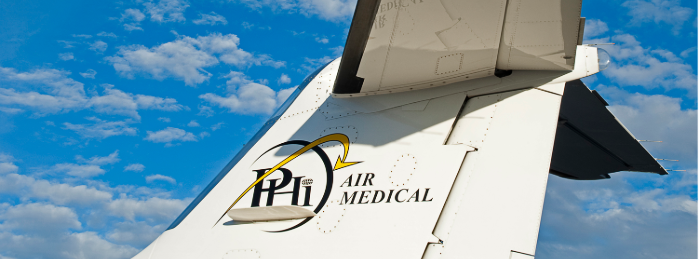The True Cost of Waiting: What Delayed Care Looks Like in Real Life
In medical emergencies, time is more than a factor—it’s often the most critical element. This is especially true in rural areas, where access to timely, specialized care can be delayed by distance, infrastructure challenges, or uncertainty. The phrase “The Golden Hour” refers to the first 60 minutes following a traumatic injury or serious medical event. It is widely accepted in emergency medicine as the vital window during which prompt treatment significantly improves survival and reduces long-term disability. When care is delayed, that window closes fast, and the consequences can be profound.
At PHI Air Medical, we see firsthand the cost of waiting—and the extraordinary outcomes when care arrives just in time. This blog explores what delayed care looks like through real-life-inspired scenarios, why every second matters, and how air medical services are often the only tool that can restore the Golden Hour.

What Is the Golden Hour?
The concept of the Golden Hour was first popularized by trauma surgeons who observed that patients receiving advanced treatment within 60 minutes of injury have the best chance of survival and recovery. While this “hour” is not rigid—some conditions require even faster intervention—it establishes urgency as a guiding principle in emergency care.
Stroke, cardiac arrest, severe trauma, and respiratory failure all require interventions that are very time-sensitive. For example, the administration of thrombolytics for ischemic stroke must occur within a narrow therapeutic window to be effective, frequently within 3 to 4.5 hours of symptom onset but ideally earlier. The sooner care begins, the better the outcome.
In rural regions where trauma centers or specialized hospitals may be over 75 miles away, ground transport alone can consume much of the Golden Hour. According to the National Rural Health Association, increased travel distances and hospital closures have made timely emergency care more elusive for rural residents.
Air medical transport bridges that gap, enabling advanced care teams to reach patients faster and get them to definitive care within those critical minutes.
The Real-World Impact of Delay
Delays in emergency care can profoundly affect patient outcomes, especially in rural settings where distances and resources are limited. Consider these generalized scenarios illustrating the cost of waiting:
Case 1: Stroke Response
In a rural community, a person begins experiencing signs commonly associated with stroke. Due to uncertainty about the severity, emergency help is not immediately sought. By the time care begins and transport to an appropriate facility occurs, the opportunity for the most effective treatment has passed, resulting in a more challenging recovery.
Case 2: Severe Injury in a Remote Area
An individual suffers a serious injury in a rural setting where local emergency teams are temporarily unavailable. Delays in backup arrival and long ground transport times mean that definitive surgical care is postponed. Despite excellent care upon arrival, the initial delay contributes to a longer recovery period.
Case 3: Cardiac Emergency on a Remote Road
A person experiences cardiac arrest while traveling through a remote area. Immediate bystander CPR is performed, but emergency medical services are far away. When air medical transport arrives, advanced lifesaving measures are initiated quickly, improving the odds of survival. However, an earlier emergency call could have enhanced recovery outcomes even further.
Why People Wait: Common Barriers to Calling Help
Waiting can be fatal, yet hesitation is common due to:
- Symptom Misinterpretation: Rural residents may not recognize warning signs or may believe symptoms will resolve, underestimating their seriousness.
- Cost Concerns: Fear of high air ambulance medical transport costs often discourages timely calls. While PHI Cares membership mitigates financial worries, awareness remains limited.
- Overreliance on Ground EMS: Many families assume conventional ambulance transport suffices, overlooking that rural terrain and distance severely limit speed.
- Communication Challenges: Poor cell service, lack of emergency communication tools, or regional isolation hinder activation of response systems.
PHI’s outreach aims to break down these barriers with education on early symptom recognition, emergency calling procedures, and available financial protections.
PHI’s Role in Restoring the Golden Hour
PHI Air Medical ensures patients receive critical care initiation immediately—not minutes after reaching a hospital. ICU-grade helicopters staffed with trained nurses and paramedics provide:
- Airway management and ventilatory support
- Cardiac life support aligned with Advanced Cardiac Life Support (ACLS) protocols
- Stroke-specific interventions on-scene and en route
- Blood transfusions and trauma care during transport
- Real-time communication and coordination with receiving hospitals
PHI’s clinical teams handle diverse emergencies—neonatal crises, respiratory failures, burns, crush injuries—delivering hospital-level care from the moment they arrive.
Changing the Mindset: Call Early, Save Lives
PHI crews frequently hear people say, “I didn’t want to trouble anyone” or “We weren’t sure it was an emergency.” Yet hesitation can cost quality of life—or life itself.
Calling early is always better. Overtriage does not harm, but undertriage risks irreversible damage. PHI partners with schools, fire departments, EMS, and community organizations to provide:
- Landing zone safety demonstrations
- Stroke and cardiac emergency recognition workshops
- First aid and trauma response training
- Preparedness talks targeting rural living challenges
This education empowers residents to act decisively.
How PHI Cares Membership Removes Financial Worries
PHI Cares membership helps families avoid costly bills for medically necessary air ambulance transport, reducing the fear that often delays calls. For rural families, where air transport accessibility can be life-saving but potentially expensive, this program adds critical peace of mind.
The Cost of Waiting Is Measured in Outcomes
The Golden Hour represents hope—a window in which timely care transforms tragedy into survival and recovery. Delays cost patients not just minutes, but mobility, independence, and sometimes their lives.
PHI Air Medical exists to close that window with swift, expert care, ensuring rural populations are not left waiting when every second counts.
Don’t wait. Don’t guess. Call immediately if you suspect a serious medical emergency. With PHI Air Medical, help is swift, capable, and ready to save lives.



